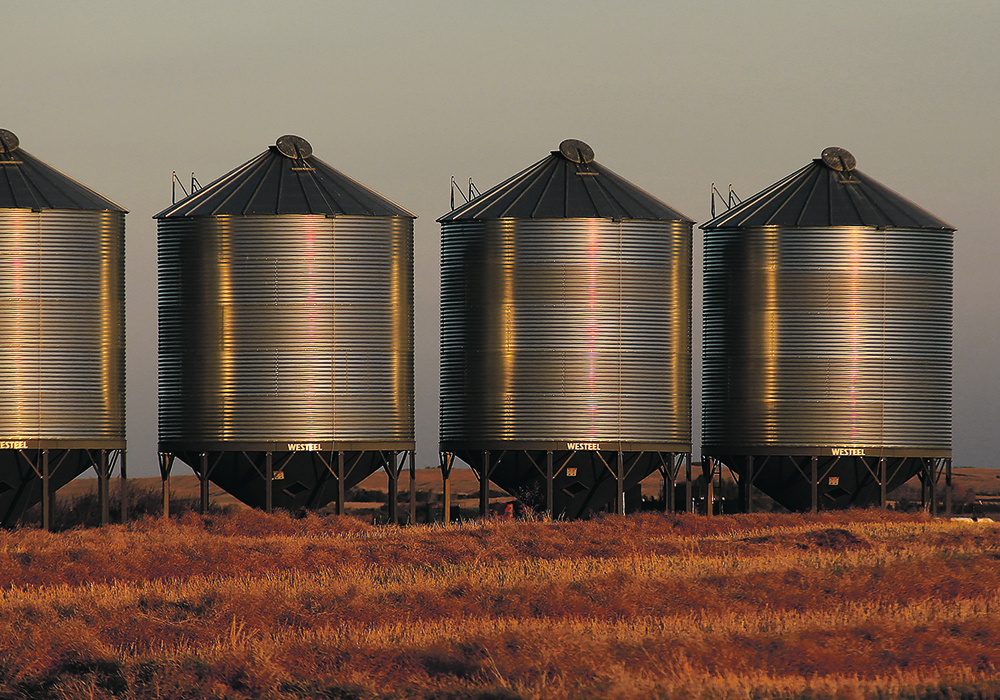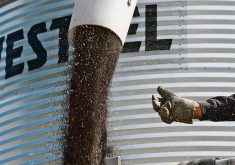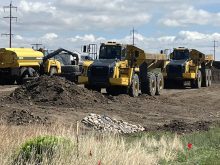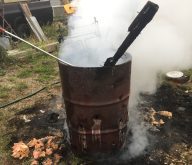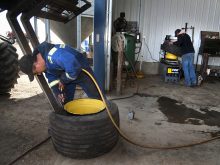The threat is a critical concern for the agricultural industry because it only takes a few seconds for people to be engulfed
Glacier FarmMedia – In Canada, approximately four people per year lose their lives from grain entrapment, according to Canadian Agricultural Injury Reporting.
To spread awareness and prevent such tragedies, the Canadian Agricultural Safety Association held its fourth annual BeGrainSafe Week Aug. 12-18. Events included an online seminar on grain entrapment hazards, risk and prevention.
Grain entrapment is a critical concern because it only takes a few seconds for people to be engulfed. Many do not survive, said CASA chief executive officer Andrea Lear in an Aug. 8 press release.
Read Also

Manitoba extends Crown land rent freeze
Manitoba government links the continued rental rate freeze on grazing and forage leases to economic and environmental challenges facing the industry
“With BeGrainSafe Week, our objective is to highlight the significance of grain safety and to raise awareness among more Canadians about the hazards associated with grain handling and storage.”
Twenty-seven people died from asphyxiation from grain or soil on Canadian farms between 2011 and 2020. These incidents are preventable, Lear said.
“This is why BeGrainSafe is dedicated to informing farmers, farm workers, farm families and farming communities about the importance of prioritizing grain safety to prevent these tragedies from happening.”
Webinar participants included Dan Marsellus, BeGrainSafe master trainer and fire chief of Kneehill County in Alberta, Catherine Rylatt, co-founder and vice-president of the Grain Handling Safety Coalition in the United Sates, and Robin Anderson, director of programs and communications at CASA.
Marsellus said grain entrapment in Canada is dealt with in a reactionary rather than preventive way.
“We’re trying to get to the forefront and be precautionary or be ready for things,” he said.
Harvest season presents a stressful and time-pressured environment. That’s normal for farmers but it can also lead to accidents, Marsellus said.
“We start to focus on everything too close, and we don’t look at the big safety picture. So, if we take a step back and look at things bigger, that’s where it becomes important.”
When grain plugging occurs, farmers can be tempted to leave equipment running and enter a bin to unplug it. That can have disastrous results when the plug clears.
“Once that happens, then that grain flows very fast, and you’re going to get caught in it,” Rylatt said. Her 19-year-old nephew and his 14-year-old co-worker both died after being engulfed in grain.
Producers often deal with fatigue, dehydration and improper nutrition during harvest, all of which play a role in farm accidents, added Anderson.
“We’re not always maybe making the best decisions because we are in a rush. Maybe we haven’t had long enough sleep. We know that not having enough sleep is a huge detriment to safety …and to our mental health,” she said.
This can severely impair judgment, leading to risky behaviours such as neglecting safety protocols.
Marsellus said the riskiest behaviour seems to happen during grain movement, including movement of vehicles. Grain handling, particularly when dealing with large quantities, presents several critical hazards that aren’t always apparent.
“Moving grain can be deadly,” Marsellus said. “The stuff flows like sand. You get moving grain, it’s going to happen in a minute.”
Entrapment can occur with alarming speed and the response time of emergency services can be lengthy. Even with well-trained local fire departments, the situation can turn deadly within moments. Equipment should always be turned off and holes should always be guarded. Every employee must be accounted for, he said.
Farmers should have safety methods and contingency plans in place because many things can go wrong before the fire department arrives, Marsellus said. In his county, all fire departments rely on volunteers, and in an emergency, it can take 20 to 30 minutes for help to arrive.
“The reality of the situation is that it happens too fast, and it doesn’t take long to get too bad. Unfortunately, a lot of the time, by the time we get there, it’s body recovery,” he said. “The more safety that can be done at the farm, that’s even better for us to get there and make it an easy rescue instead of a recovery.”
Crush pressure is a critical factor in entrapment cases. As a person becomes more deeply buried in grain, the pressure exerted on their body increases dramatically. It is nearly impossible to free them without proper equipment and training. Firefighters are trained to stop grain flow immediately, even though it may seem counter intuitive.
Most grain entrapments end with the person getting out on their own or with help from co-workers, so rescue services aren’t called. Then people brush off the events and fail to think about prevention, said Rylatt. Not talking about it can be dangerous.
“We can talk about it more and be more aware of it and work together more because … when you’re working on a farm, a lot of times you are working alone. You don’t think to ask somebody for help.”
She also noted the hazards associated with moving large equipment, like trucks and combines, have historically been a significant concern and there appears to be a growing awareness and fewer accidents in recent years.
This progress suggests that safety measures and mutual understanding are effective, but it’s crucial to remain vigilant because these hazards are not entirely eliminated, Rylatt added.
During the online seminar, she recalled a situation where a new grain handling system lacked essential safety features, such as railings on catwalks 60 to 70 feet above ground.
“It was only when they started building it that we asked about the tie-off points and the railings,” she said. “When you get up that high … you gotta have a railing.”
It’s not uncommon for safety elements to be considered optional or overlooked during the ordering process. Making them a priority can prevent accidents and save lives, Rylatt said.
Ongoing training and awareness are vital to prevent accidents related to grain handling. Many farmers who also serve as volunteer firefighters are trained to recognize the dangers and respond effectively.
The landscape of grain handling safety is evolving, and some newer grain systems include built-in safety features like covered holes and no-entry designs that can prevent accidents.
Ensuring that stored grain is in the best possible condition can also reduce the need for workers to enter bins, further mitigating risks, Rylatt said.
“The safest grain bin is one you don’t have to enter at all.”
CASA’s BeGrainSafe program was launched in 2017 in response to a rise in grain entrapment fatalities. The program offers education on prevention, rescue training and on-site workplace training to increase awareness of grain-related dangers and save lives.


